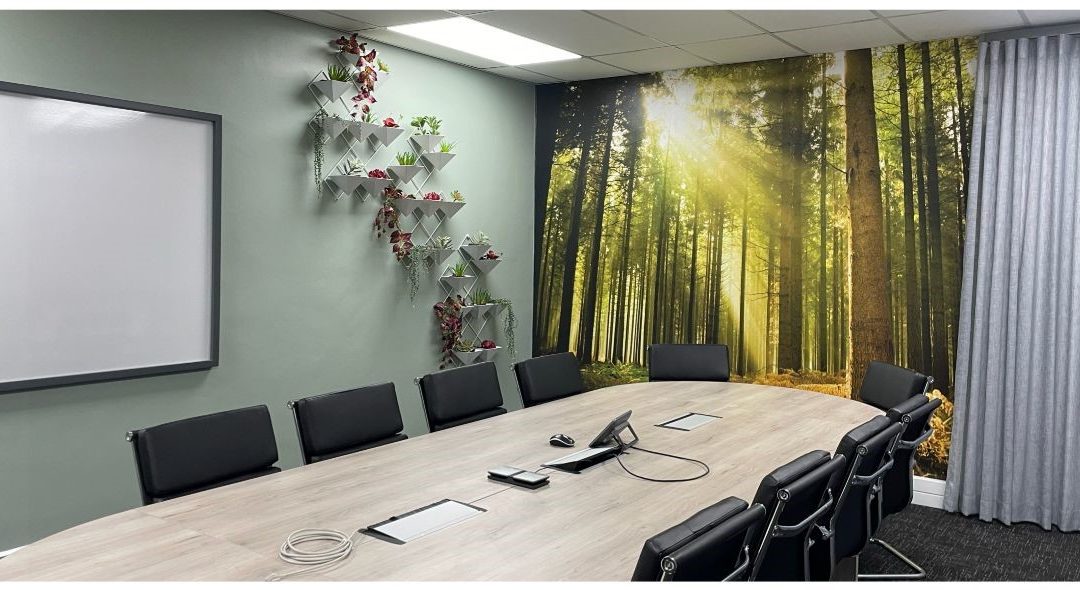1. Hybrid Workspaces
Without a doubt one of the biggest changes over the last two years has been the shift towards hybrid working.
What has changed for employees in the aftermath of the unprecedented worldwide pandemic is how the employees view work-life balance, well-being, and flexible working. As a result, business owners must address these issues and make the necessary modifications to their workspaces to support hybrid working. This is a trend that is likely to continue.
Many companies have found that it is vital to empower employees to select how and where they wish to work. Offices need to be multifunctional, including quiet areas for concentration, collaborative spaces for creativity, and chilled areas to decompress. These improve both productivity and employee well-being.
While the hybrid office is not a new notion, the Covid-19 epidemic has given it additional impetus. It has transformed the dynamic such that people may work from home and in the office smoothly. However, it necessitates a variety of solutions and concepts, which include:
Wi-Fi equipped areas for communicating with remote workers
Meeting rooms and private areas which can be booked using technology.
Office furniture that can be configured and moved easily
A mix of collaborative team-working areas and private areas
2. Natural Light
Given that we spend the majority of our days inside, it is not unexpected that natural light is a key consideration when designing workplace spaces. In fact, according studies access to natural light is the number one feature workers seek in their workplace. Additional research has found that boosting natural light has a substantial influence on mood, creativity and attention.
Natural light is an important factor to consider when designing a workspace. Effective space layout can help to improve natural light. Creating open-plan workstations, for example, maximizes natural light. Likewise, incorporating glass partitions allows light to stream throughout the office.
3. Fresh Air
There are various advantages of breathing fresh air. Because the brain uses 20% of the air we breathe, having fresh air contributes to sharper thinking and concentration. Oxygenated blood has also been shown in studies to greatly increase brain serotonin production. This, in turn, can increase a sense of contentment and well-being at work.
There are also psychological to getting fresh air. When working indoors, respiration becomes shallow (inhaling air into the top part of the lungs, or apical breathing). Moving about outside, whether walking, jogging, or running, promotes enhanced diaphragmatic breathing. Deep breathing not only allows you to consume more oxygen, but it also allows you to expel more toxins.
Breathing in fresh air provides additional health advantages. When air is continually circulating, viruses and bacteria have a lower chance of survival. Low-quality indoor air can cause headaches, exhaustion, and, in certain cases, chronic conditions such as allergies and respiratory infections.
4. Optimise Space
The use of office space is becoming increasingly crucial. Every workplace has a few “in-between areas” or “dead spots.” Consider passageways, beneath staircases, and other nooks and corners that have never been used before. One of the most common contemporary office design trends is the increased usage of these unorthodox spaces that are turned into useful work locations in the shape of tiny huddle booths, casual gathering spaces, or even private one-person pods.
Space efficient office design is becoming increasingly important as companies embrace a more flexible style of working. Give real thought on how to optimize any space and think imaginatively about how to use otherwise dead space.
5. Use Colours
While many businesses focus solely on their brand palette, the notion that everything must match exactly is out of date. Explore different tones that gently imply what specific rooms are created for. Colour has a tremendous influence on employee happiness and productivity. Soft colours, for example, increase focus, while bold colours improve teamwork and creativity. Read our article on The Importance of Colour in Interior Design.

